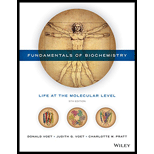
(a)
To explain: The reason for the presence of only one allele at some loci.
Concept introduction:
The
(b)
To identify: The suspect that could be a possible source of the blood sample.
Concept introduction:
The polymeric chain reaction (PCR) is a technique in which amplification of a specific DNA segment occurs quickly and accurately. In this technique, a DNA sample is separated using restriction enzymes into single strands. Then, these strands are incubated with DNA polymerase such as Taq polymerase, two primers, and deoxynucleotide triphosphates (dNTPs). Different types of fluorescent primers are used in PCR, and the PCR-amplified products are subjected to electrophoretograms to identify the alleles.
(c)
To determine: Whether the suspect could be recognized using one of the three given STR loci.
Concept introduction:
The polymeric chain reaction (PCR) is a technique in which amplification of a specific DNA segment occurs quickly and accurately. In this technique, a DNA sample is separated using restriction enzymes into single strands. Then, these strands are incubated with DNA polymerase such as Taq polymerase, two primers, and deoxynucleotide triphosphate (dNTPs). Different types of fluorescent primers are used in PCR, and the PCR-amplified products are subjected to electrophoretograms to identify the alleles.
(d)
To compare: The amount of DNA obtained from suspect 1 with suspect 4.
Concept introduction:
The polymeric chain reaction (PCR) is a technique in which amplification of a specific DNA segment occurs quickly and accurately. In this technique, a DNA sample is separated using restriction enzymes into single strands. Then, these strands are incubated with DNA polymerase such as Taq polymerase, two primers, and deoxynucleotide triphosphate (dNTPs). Different types of fluorescent primers are used in PCR, and the PCR-amplified products are subjected to electrophoretograms to identify the alleles.
Want to see the full answer?
Check out a sample textbook solution
Chapter 3 Solutions
Fundamentals of Biochemistry: Life at the Molecular Level
 BiochemistryBiochemistryISBN:9781319114671Author:Lubert Stryer, Jeremy M. Berg, John L. Tymoczko, Gregory J. Gatto Jr.Publisher:W. H. Freeman
BiochemistryBiochemistryISBN:9781319114671Author:Lubert Stryer, Jeremy M. Berg, John L. Tymoczko, Gregory J. Gatto Jr.Publisher:W. H. Freeman Lehninger Principles of BiochemistryBiochemistryISBN:9781464126116Author:David L. Nelson, Michael M. CoxPublisher:W. H. Freeman
Lehninger Principles of BiochemistryBiochemistryISBN:9781464126116Author:David L. Nelson, Michael M. CoxPublisher:W. H. Freeman Fundamentals of Biochemistry: Life at the Molecul...BiochemistryISBN:9781118918401Author:Donald Voet, Judith G. Voet, Charlotte W. PrattPublisher:WILEY
Fundamentals of Biochemistry: Life at the Molecul...BiochemistryISBN:9781118918401Author:Donald Voet, Judith G. Voet, Charlotte W. PrattPublisher:WILEY BiochemistryBiochemistryISBN:9781305961135Author:Mary K. Campbell, Shawn O. Farrell, Owen M. McDougalPublisher:Cengage Learning
BiochemistryBiochemistryISBN:9781305961135Author:Mary K. Campbell, Shawn O. Farrell, Owen M. McDougalPublisher:Cengage Learning BiochemistryBiochemistryISBN:9781305577206Author:Reginald H. Garrett, Charles M. GrishamPublisher:Cengage Learning
BiochemistryBiochemistryISBN:9781305577206Author:Reginald H. Garrett, Charles M. GrishamPublisher:Cengage Learning Fundamentals of General, Organic, and Biological ...BiochemistryISBN:9780134015187Author:John E. McMurry, David S. Ballantine, Carl A. Hoeger, Virginia E. PetersonPublisher:PEARSON
Fundamentals of General, Organic, and Biological ...BiochemistryISBN:9780134015187Author:John E. McMurry, David S. Ballantine, Carl A. Hoeger, Virginia E. PetersonPublisher:PEARSON





